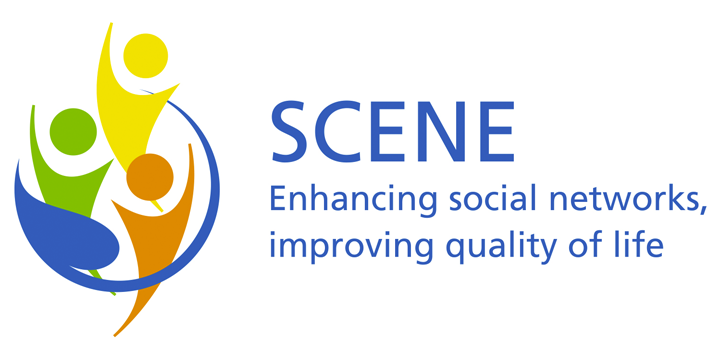About 120,000 patients with psychosis are being cared for in secondary services in the NHS at any point of time. They receive care-coordination, medication, and sometimes psychological treatments. Yet, one central problem of the patients’ life, that all the care provided by community teams has failed to prevent or overcome, is their social isolation, which is common and marked in patients with psychosis. Social isolation is not precisely defined, but is usually understood as a lack of sufficiently large and supportive social networks, with few friends and limited social contacts. Reviews show that the social networks of people with psychosis are much smaller than those of the general population and of other groups with long-term mental and physical disorders (Emlet 2006). Moreover, more than 50% of their reduced social networks consist of family members rather than friends and other contacts (Palumbo et al. 2015). In an analysis of data of 1396 patients with psychosis from four international multi-centre studies (Giacco et al., 2012), 45% were found not to have met any friend in the previous week.
In a recent survey in East London (Giacco et al., 2016), 80% of patients with psychosis felt lonely, and 43% very or extremely lonely. Only 30% had had more than one social contact in the previous week. Whilst social isolation is a serious problem in itself, it is also associated with further negative consequences for the patients with unfavourable implications for their quality of life and other health outcomes, including psychopathological symptoms, substance abuse, crises and hospitalisations. Various studies in North America and Europe have shown that smaller social networks, loneliness, the absence of reliable social contacts and lower social support all predict poorer quality of life and unfavourable health outcomes in patients with psychosis (Cohen et al, 1997; Clinton et al, 1998; Bengsson-Tops and Hansson, 2001; Norman et al., 2005). Social networks are often assessed as the number of meaningful social contacts within a defined period of time. Different models have been outlined to explain the negative impact of reduced networks on quality of life and – vice versa – how larger networks may be linked with better quality of life. Eklund and Hansson (2007) suggested that larger networks of patients lead to higher self-esteem, better coping skills, greater resilience and less self-stigmatisation which then influence quality of life.
Following these models, linking patients with psychosis with the community and strengthening their social networks is likely to improve their quality of life and health outcomes. Expanding patients’ networks may also reduce the costs for health services, as it enables patients to utilise social resources and a wider range of relationships for support, instead of primarily relying on professional support through health services. Cost pressures are likely to continue in the NHS, and it appears to reduce the need for on-going high-level input from health services, including costly crisis interventions, as far as possible.
An intervention for expanding patients’ networks would have large benefits. The need for such an intervention is already acknowledged in many areas in the NHS. For example, despite significant decommissioning of many established services in mental health care, commissioners in different localities have decided to fund ‘social prescriptions’, which is a mechanism to provide financial support for social activities. The commissioned ‘social prescription’ initiatives however are highly variable, and currently cannot refer to trial based research evidence as we propose to provide in this programme. For such interventions to be stipulated by guidelines and funded in routine care by commissioners across the NHS, they need to be standardised, well specified and manualised to facilitate replicability, and evidence-based.
There is an emerging evidence base for interventions to increase the social networks of patients with psychosis. All randomised controlled trials have been published in the last five years, which indicates a rising interest in this area. The evidence base is encouraging but still small, and refers exclusively to trials conducted in other countries with different social and health care systems (Anderson et al. 2015). For example, in Italy, where the largest and most relevant trial was conducted, psychiatrists were involved in the intervention, and 75% of the patients lived with their parents; both factors will be very different in the NHS. Thus, interventions with positive evidence from other countries require adjusting to the context of the United Kingdom and the NHS.
Current research on mental health service delivery in the UK puts much emphasis on who should provide care for patients with psychosis, e.g. different clinicians in primary or secondary care, social workers, peer supporters, befrienders, mentors, or support workers. However, what exactly these professionals or volunteers should do to help patients and what precise interventions they should deliver, often remains only vaguely defined. Well-defined and evidence-based interventions are required that can be learned by mental health professionals (and potentially also by volunteers or peers) and make their input effective in improving outcomes and thus more cost-effective.
A standardised intervention to expand networks of patients with psychosis might be administered by professionals with different roles and backgrounds. This is important if the intervention is to be used in NHS services in the future.
At this stage it is difficult – if not impossible – to predict, how services will be organised when the proposed research programme ends, i.e. in more than five years’ time. Patients with psychosis may be cared for in different types of services across primary and secondary care, and services are likely to be organised with substantial regional variation. Thus, we would like to make sure that the intervention can be administered by different professionals in a range of primary or secondary care settings, with limited training.
